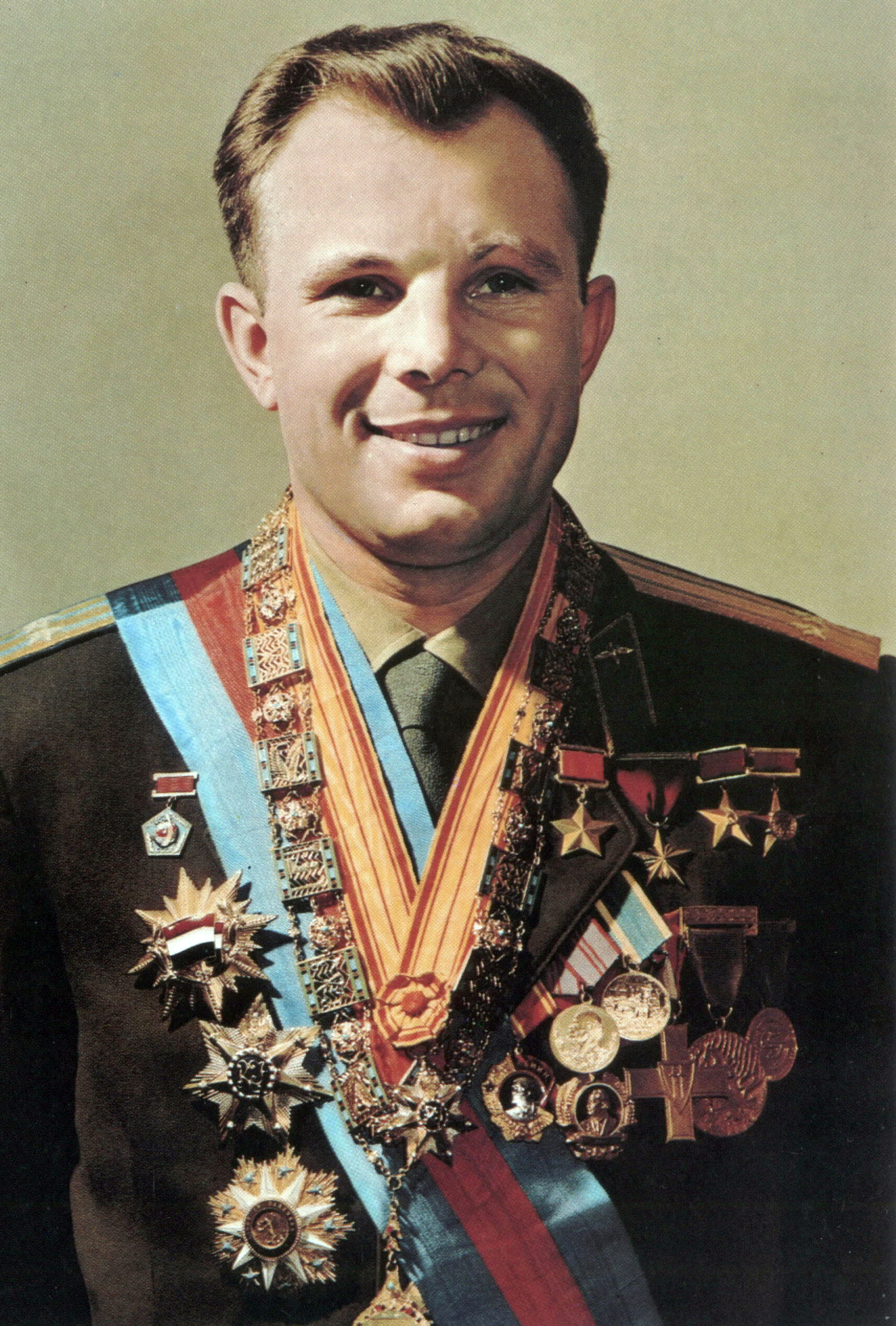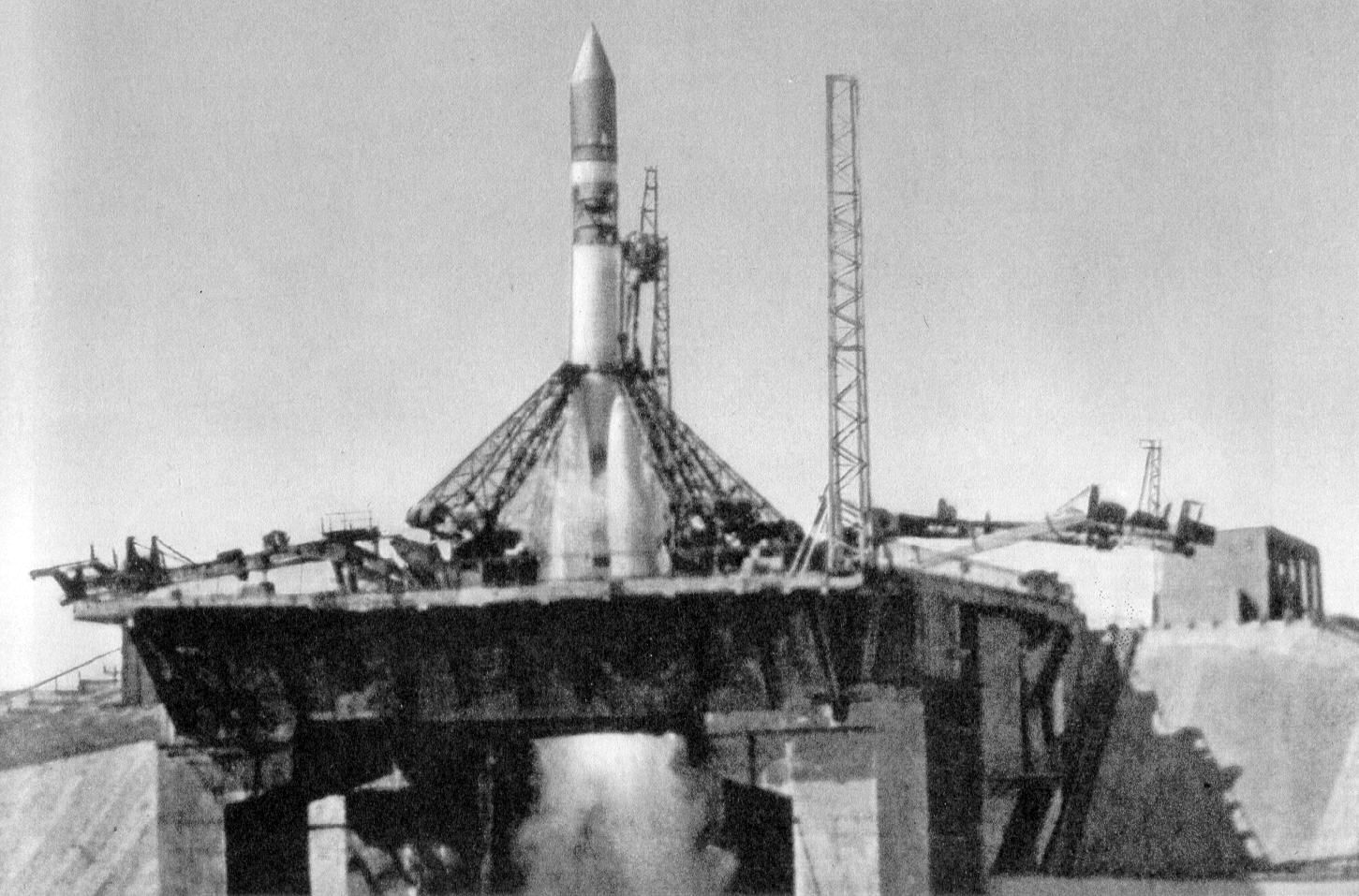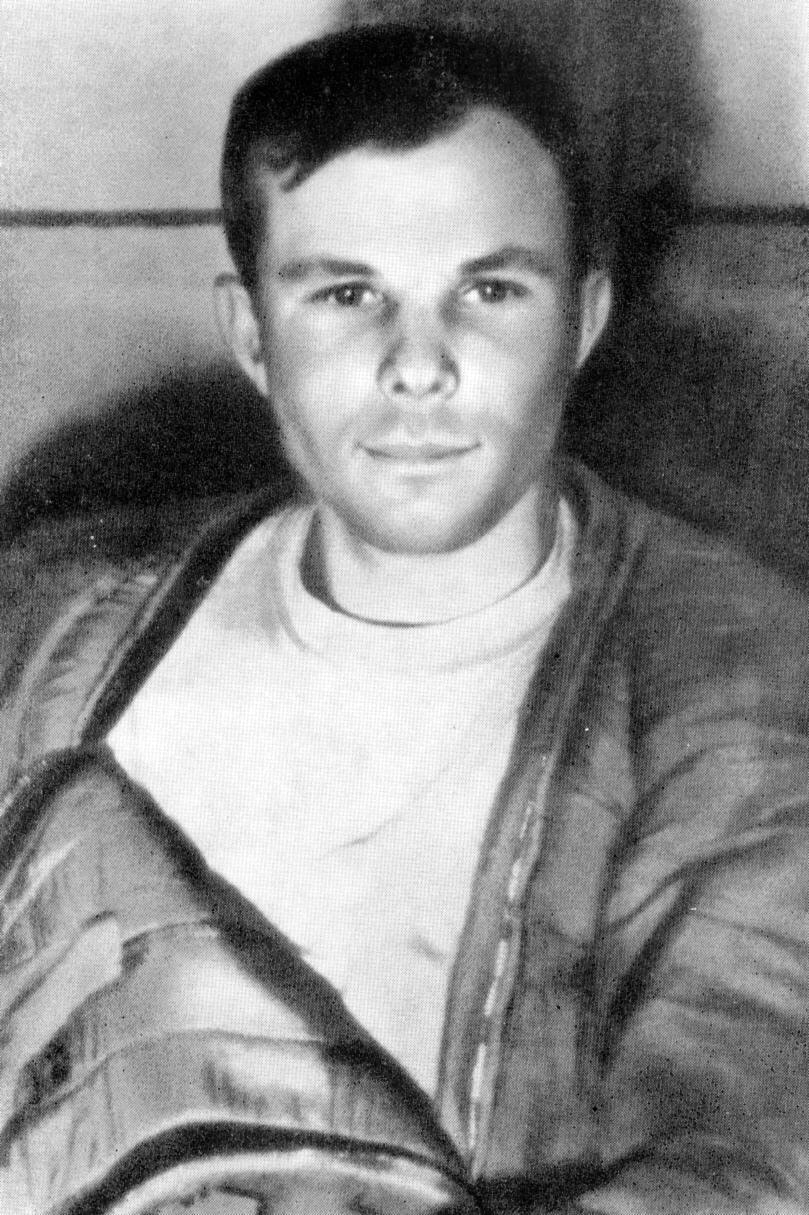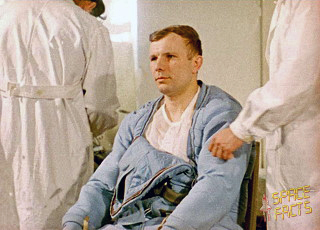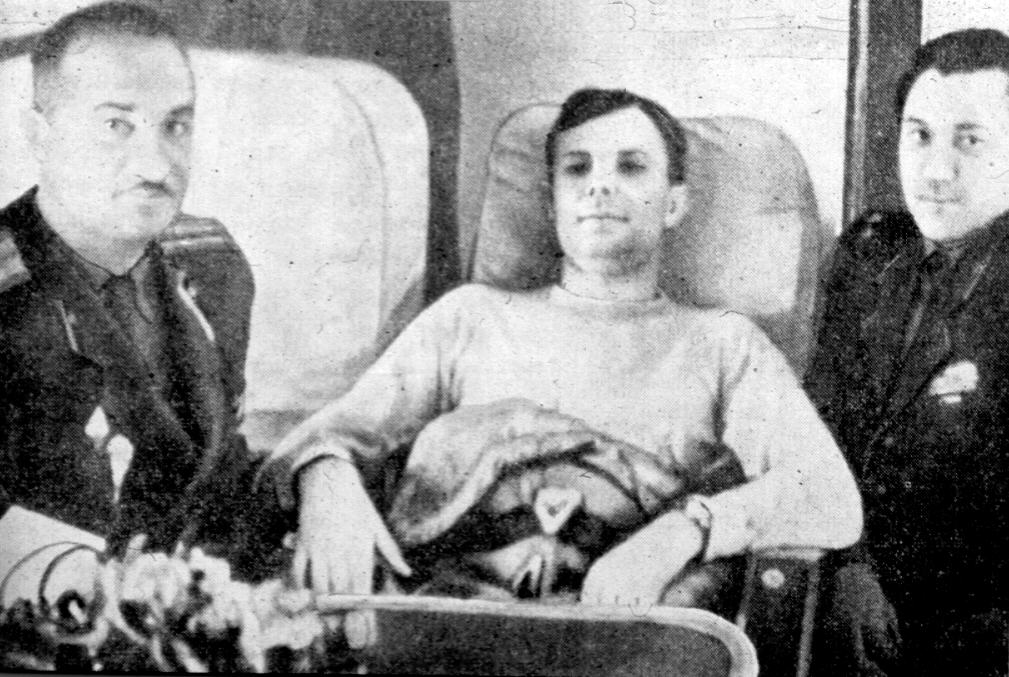

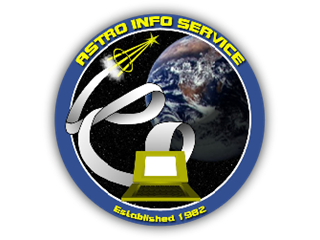
YURI A. GAGARIN |
||
PROFILE |
||
Full Name: |
Yuri Alexeyevich GAGARIN |
|
Rank: |
Colonel, Soviet Air Force (Deceased) |
|
Cosmonaut Call Sign: Kedr (Cedar) |
Cosmonaut Number: 1 |
First Identified: 12 April 1961, when launched aboard Vostok |
Born: |
9 March 1934, Klushino, Gzhatsk (currently Gagarin) Raion, Smolensk Oblast, USSR (Russian). |
|
Died: |
27 March 1968 in a jet crash, aged 34. |
|
Education: |
1941: (1 Sep) Attended school in the village of Klushino, but his education was interrupted by the Nazi invasion of Russia just six weeks later; their house was occupied and the family had to live in a dugout; both his brother and sister were taken by the Germans during their retreat but were released at the end of the war.
1943-49: (Mar 1943) Resumed his education; (May 1945) the family moved to Gzhatsk, where Gagarin attended secondary school; (Sep 1949) Graduated 6th grade at school, having developed an interest in mathematics and science. |
|
Career Highlights: |
1949-51: Following graduation from school, he took entrance exams for the Lyubertsy Agricultural Machinery Plant (vocational school No. 10); attended evening classes, graduating with honours as a moulder/foundry worker in 1951.
1951-55: Attended school for working youth No. 1 in Lyubertsy, then attended the Saratov Industrial Technical School; (29 Jun 1955) graduated as a foundry man/technician with honours, in the field of 'Foundry Production', in 1955.
4 Sep 1954 - 1 Oct 1955: Enrolled in the amateur Saratov Air Club; (18 May 1955) completed his first parachute jump; learnt to fly Yak-18 biplane; (Jun 1955) first solo flight; (29 Jun 1955) received a ground school diploma from the flying club; spent the summer of 1955 at an aviation camp to develop his flying skills.
1955-57: (27 Oct 1955) Entered the Soviet Air Force as an aviation cadet and enrolled as a student at the Orenberg Higher Air Force School for Pilots, Orenburg, South Ural military district; (22 Feb 1956) promoted to Sergeant; (16 Jun 1957) graduated Orenburg aviation school, qualified as a fighter pilot; (May 1957) flew jets for the first time, although his lack of height caused him some issues flying MiGs until he started to use a cushion to enable him to reach the controls; (28 Mar 1957) soloed on a MiG-15 jet fighter for the first time.
1957-60: Served as a pilot in the Orenburg region; (5 Nov 1957) promoted to Junior Lieutenant and attached to the command of the Air Force Northern Fleet Commander; (6 Nov 1957) promoted to Senior Lieutenant; completed a posting to the Arctic region (served with Shonin); (29 Dec) served as a pilot of the Air Force Northern Fleet, Luostary-Novoye settlement, Murmansk region; (7 Jul 1959) Military Pilot 3rd Class; (24 Oct) recommended for the post of a senior pilot; promoted to Captain. |
|
|
||
SELECTION DETAILS |
||
Category: |
Pilot |
|
Group: |
1960 First Air Force Selection
1959-60: (7-10 Oct 1959) Undertook medicals to join the cosmonaut team; (8 Mar 1960) learned of his selection to the team. |
|
|
|
|
COSMONAUT ASSIGNMENTS |
||
1960: |
(Feb) Joined team; (7 Mar) enrolled as a student-cosmonaut, Air Force detachment, TsPK; (May) joined Vostok training group under the command of Col. M.L. Gallai; Vostok training; (16 Jun) joined the Communist Party of the Soviet Union - CPSU (No. 08909627); (10 Nov) received parachute instructor rating. |
|
1961: |
Vostok training; (25 Jan) qualified as an Air Force cosmonaut and selected to Vostok Top Six; Vostok training for the first human space flight; (8 Apr) named Pilot, Vostok; (12 Apr) Pilot, Vostok, FIRST HUMAN IN SPACE; promoted to Major during the flight; (12 Apr) Cosmonaut First Class; (14 Apr) Hero of the Soviet Union - H of the SU (No. 11175); Military Pilot First Class; (25 May) named as Commander, cosmonaut team; gave up active flight status and began world tour, the start of many public appearances around the globe; (1 Sep) started studies at Zhukovsky Academy (until 1968). |
|
1962: |
Commander, cosmonaut team; (12 Jun) promoted to Lt-Colonel; (Aug) Capcom, Vostok 3 and 4. |
|
1963: |
Commander, cosmonaut team; (4 Jan) surgery for appendectomy; supervised initial training of the 1963 second Air Force (Pilot) selection; (30 May) Cosmonaut 3rd Class; (Jun) Technical Director, Vostok 6; (18 Jul) surgery for tonsillectomy; (6 Nov) promoted to Colonel; (20 Dec) replaced as Commander, cosmonaut team by Nikolayev; (21 Dec) appointed Deputy Director, Cosmonaut Training Centre (TsPK). |
|
1964: |
Deputy Director TsPK; (20 Mar) named Director, Department 3, TsPK, in addition to his role as Deputy Director of the centre; (Oct) Capcom Voskhod 1. |
|
1965: |
Deputy Director/ Director Dept. 3, TsPK; (Mar) Capcom Voskhod 2; (1 Sep) selected to begin Soyuz training as Commander of Soyuz active spacecraft within second crew (Back-up Commander - BUp Cdr); Soyuz training. |
|
1966: |
Soyuz training; (Jun) joined Soyuz 1/2 training group; Soyuz training; (1 Sep) restored to flight status; Soyuz training. |
|
1967: |
Soyuz training; (Apr) BUp Cdr (to Komarov) and Capcom Soyuz 1; Soyuz training; (30 Nov) grounded from flying for a second time. |
|
1968: |
Soyuz training; in charge of cosmonaut preparations for space flight; (17 Feb) graduated Zhukovsky AF Engineering Academy; (18 Feb) defended thesis on aerodynamics (of reusable spacecraft); (2 Mar) completed course at Zhukovsky Academy; (13 Mar) order to ground him rescinded; (27 Mar) killed in the crash of his MiG-15 during a training flight with Colonel-Engineer V.S. Seryogin, H of the SU. The crash occurred near Novosyolov village, Kirzach district, Vladimir region; buried in the Kremlin Wall, Red Square, Moscow. |
|
|
At some point he was involved in a major car crash which resulted in him losing his active status. His appearance changed after the accident, with a scar over his eye. At the time of his death, Gagarin was completing a flying test to evaluate his capabilities for flying solo again, as part of his preparations for a second space flight (in a Soyuz).
A major investigation into his death was undertaken by the Soviet Air Force, under the auspices of the Communist Party. A detailed report was produced which showed that the crash was an accident. The incident was reviewed again in 1988, but speculation remains that the crash was not an accident. |
|
|
|
|
Yuri GAGARIN Space Flight Missions |
||||||
Mission |
Launch Vehicle |
Crew Position |
Dates DD/MM/YY |
Duration DD:HH:MM:SS |
Orbits |
EVAs |
Vostok |
R-7 |
Pilot |
12/04/61 |
00:01:48:00 |
1 |
0 |
|
||||||
Missions Flown |
1 |
Total Flight Time |
00:01:48:00 |
1 |
0 |
|
|
|
|
|
|
|
|
Space Explorer Achievements |
||||||
First person to fly in space (12 April 1961) |
||||||
The anniversary of Gagarin's historic space flight became a major event in the Soviet Union/Russia every year. Soviet/Russian crews who follow Gagarin into space make a point of visiting his office at TsPK before leaving for the Baikonur Cosmodrome. |
||||||
|
||||||
